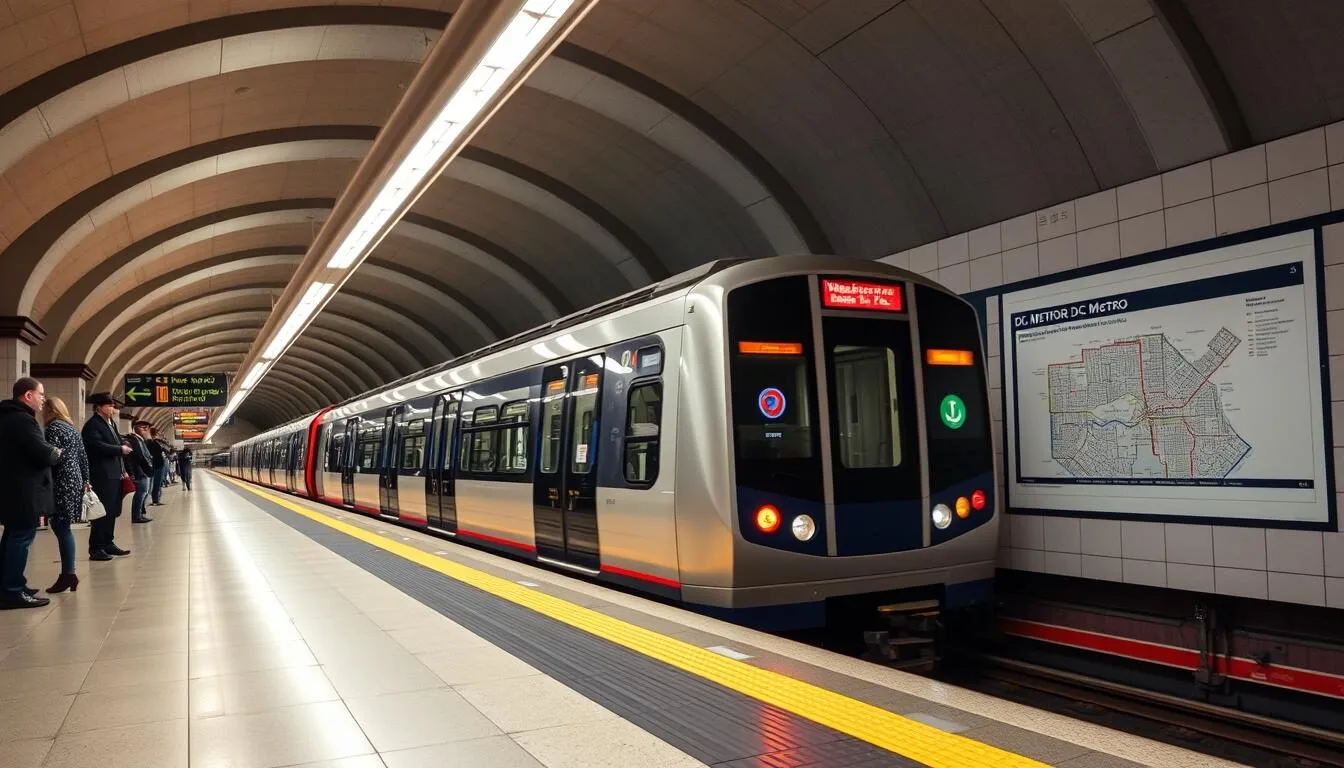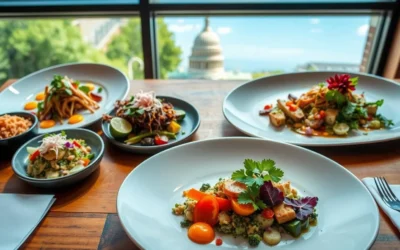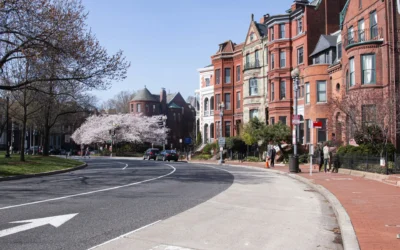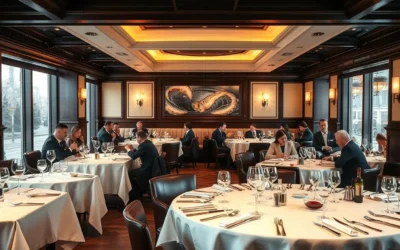Did you know that 58% of commuter trips in Washington DC are made by bike, walking, or public transit? This impressive statistic makes DC one of America’s most transit-friendly cities, where visitors can easily explore without ever needing a car. The nation’s capital boasts an extensive, interconnected transportation network that makes navigating its iconic landmarks, diverse neighborhoods, and cultural attractions remarkably simple.
Getting to Washington DC
Washington DC is served by three major airports and excellent train connections, making it easily accessible from anywhere in the country and around the world. Before exploring the city’s public transportation system, you’ll need to know how to reach the capital.
By Air
The DC area is served by three major airports, all connected to the city’s public transportation network:
- Ronald Reagan Washington National Airport (DCA) – Located just across the Potomac River in Arlington, Virginia, and directly connected to the Metro system via the Blue and Yellow lines.
- Washington Dulles International Airport (IAD) – Located in Virginia, about 26 miles from downtown DC. The Silver Line Metro now connects directly to the airport.
- Baltimore/Washington International Thurgood Marshall Airport (BWI) – Located about 30 miles northeast of DC in Maryland, connected via the MARC train to Union Station.
Ready to book your flight to Washington DC? Find the best deals on flights to any of DC’s three airports.
By Train
Union Station is Washington DC’s main train hub, served by Amtrak’s high-speed Acela service and regional trains connecting to cities throughout the Northeast Corridor and beyond. The station is directly connected to the Metro Red Line, making it easy to reach any part of the city upon arrival.
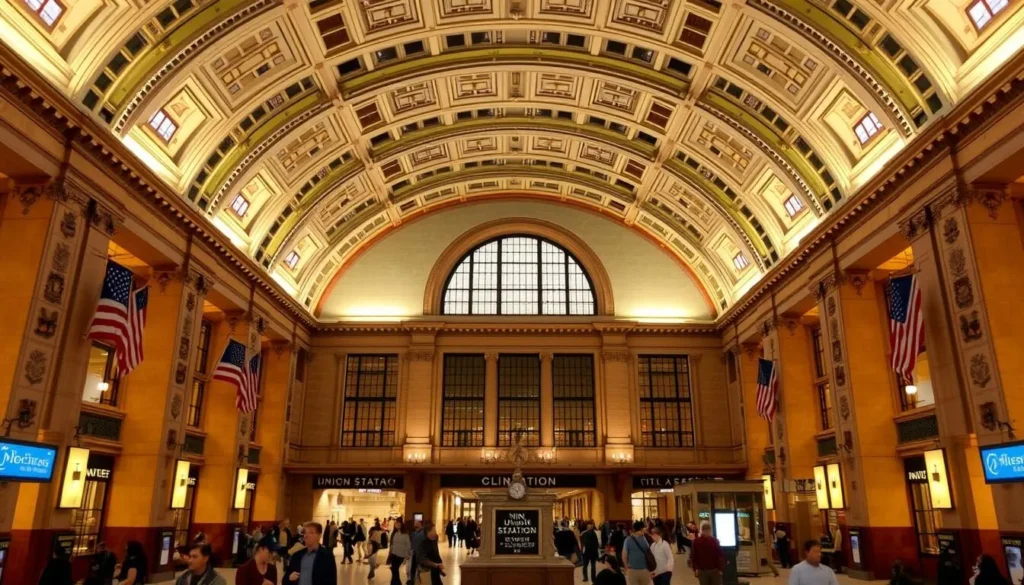
Washington DC Public Transportation: The Metro System
The Washington Metropolitan Area Transit Authority (WMATA) operates the city’s extensive Metrorail system, commonly known as the Metro. As the backbone of Washington DC public transportation, the Metro connects all four quadrants of the city with suburban Maryland and Virginia.
Metro Lines and Map
The Metrorail consists of six color-coded lines: Red, Blue, Orange, Yellow, Green, and Silver. Each line serves different parts of the city and surrounding areas. Popular tourist destinations like the National Mall, Smithsonian museums, and major monuments are easily accessible via Metro stations.
You can plan your journey using WMATA’s Trip Planner tool or download the official Metro app for real-time updates and directions.
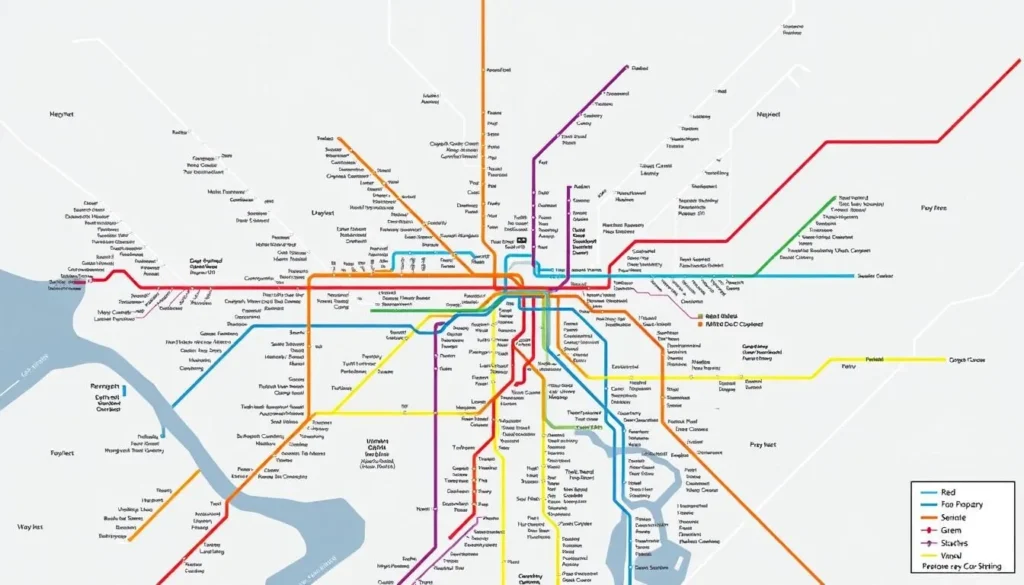
Metro Fares and Payment
Metro fares vary based on distance traveled and time of day. The most convenient payment methods include:
- Contactless credit/debit cards – Simply tap your card on the faregate
- Mobile wallet (Apple Pay, Google Pay) – Tap your device on the faregate
- SmarTrip card – Rechargeable fare cards available at any Metro station
- SmarTrip mobile app – Virtual cards for Apple and Android devices
For visitors planning multiple trips, consider purchasing a 1-day ($13), 3-day ($28), or 7-day ($58) unlimited pass for the best value.
Metro Hours
| Day | Operating Hours |
| Monday – Thursday | 5:00 AM – 12:00 AM |
| Friday | 5:00 AM – 2:00 AM |
| Saturday | 6:00 AM – 2:00 AM |
| Sunday | 6:00 AM – 12:00 AM |
Looking for accommodations near Metro stations? Find the perfect place to stay with easy access to Washington DC public transportation.
Bus Transportation Options
Washington DC’s extensive bus network complements the Metro system, reaching areas not served by rail and providing more direct routes between certain destinations.
Metrobus
Operated by WMATA, Metrobus runs hundreds of routes throughout DC and the surrounding areas. The system uses eco-friendly buses powered by compressed natural gas or hybrid electric systems, producing about 45% fewer hydrocarbons than traditional diesel buses.
Standard Metrobus fare is $2.25, payable with a SmarTrip card or exact cash. Transfers between buses are free within a two-hour window when using a SmarTrip card.
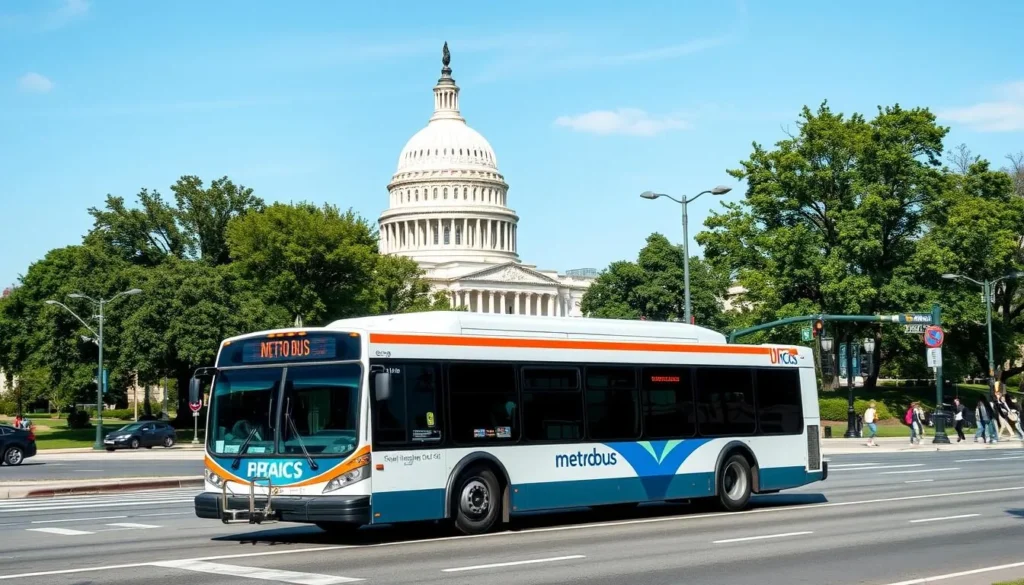
DC Circulator
The DC Circulator offers simple, frequent service along six routes designed for easy access to DC’s major attractions and neighborhoods. With buses arriving every 10 minutes and a flat fare of just $1, the Circulator is an affordable and convenient option for tourists.
Popular routes include the National Mall route, which connects major monuments and museums, and the Georgetown-Union Station route, which links these two major destinations.
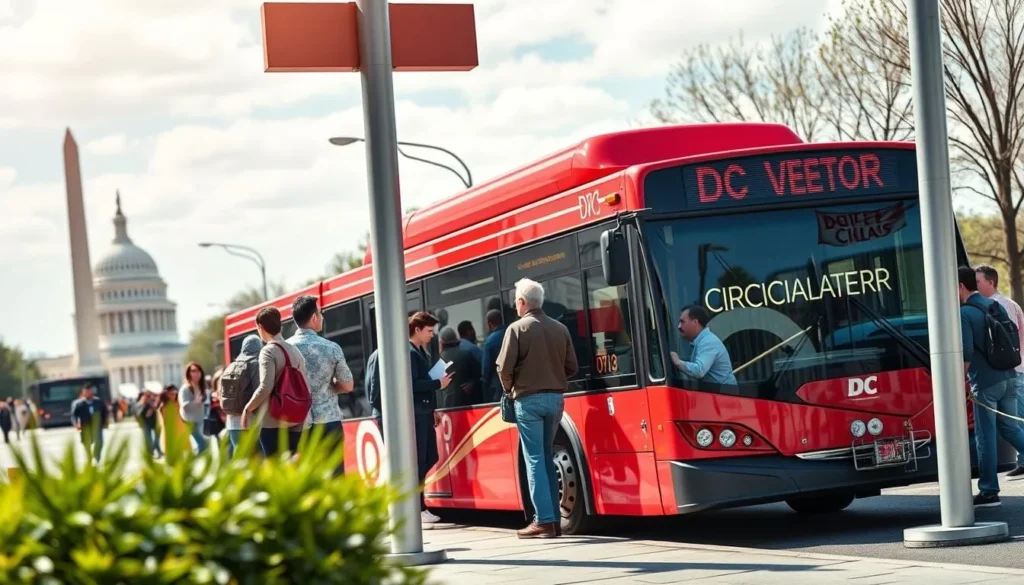
Pro Tip: Download the Transit app or use Google Maps for real-time bus arrivals and route planning. Both show exactly when your bus will arrive and offer step-by-step navigation.
Alternative Transportation Options
Beyond the Metro and bus systems, Washington DC offers several other transportation options that provide flexibility and convenience for exploring the city.
Capital Bikeshare
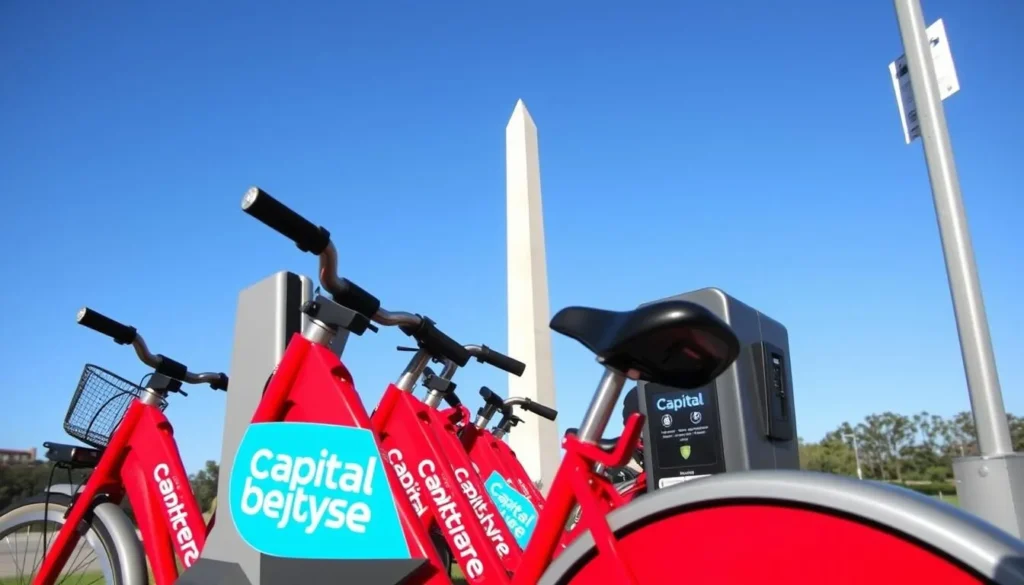
With over 350 stations and 3,000 bicycles across DC, Maryland, and Virginia, Capital Bikeshare offers a healthy and eco-friendly way to explore the city. Single trips start at $1 to unlock plus $0.15/minute, or you can purchase day passes for $8 that include unlimited 45-minute rides.
The National Mall area features numerous bikeshare stations, making it easy to cycle between monuments and museums.
Electric Scooters
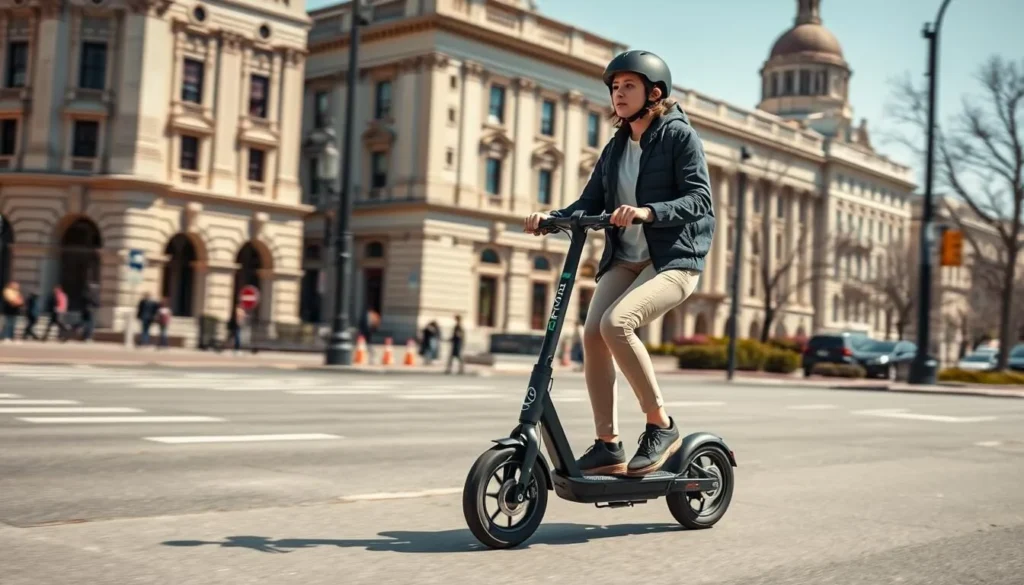
Several companies including Lime, Bird, and Spin operate dockless electric scooters throughout DC. These scooters offer a fun way to cover short to medium distances and can be unlocked using smartphone apps.
Rates typically include a $1 unlock fee plus $0.15-0.39 per minute. Remember to follow DC’s scooter regulations: ride in bike lanes when available, park responsibly, and don’t ride on sidewalks in the Central Business District.
Rideshare & Taxis
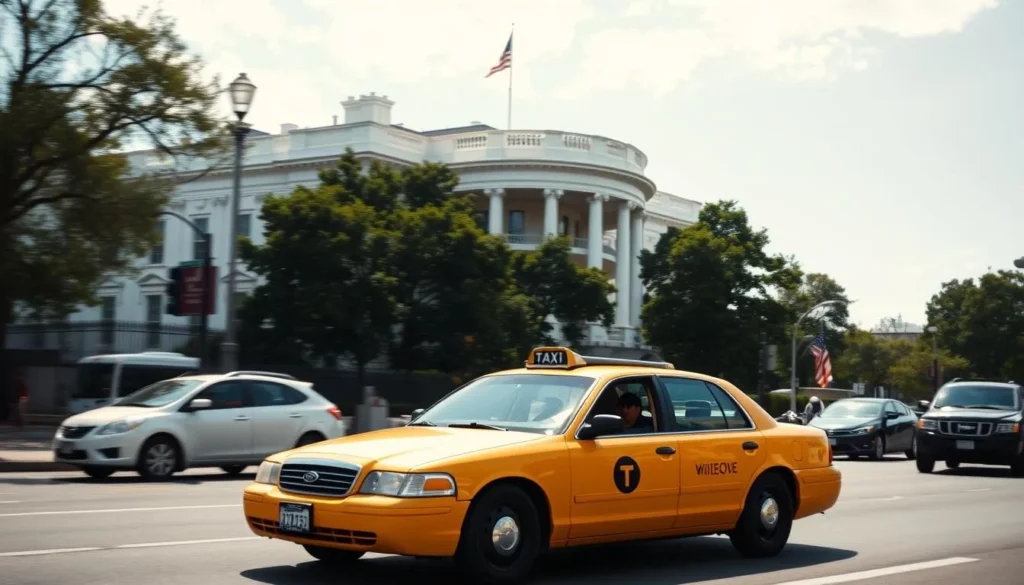
Uber and Lyft operate extensively throughout the DC area, offering a convenient option when public transportation isn’t ideal. Traditional taxis are also readily available and can be hailed on the street or at designated taxi stands.
For accessibility needs, wheelchair-accessible taxis can be reserved in advance through the DC Department of For-Hire Vehicles.
Want to explore beyond the city center? Renting a car gives you the freedom to visit nearby attractions at your own pace.
Exploring DC on Foot
Washington DC is an exceptionally walkable city with wide sidewalks, beautiful streetscapes, and relatively flat terrain. Many of the city’s major attractions are concentrated in walkable areas, making foot travel both practical and enjoyable.
Walking the National Mall
The National Mall stretches approximately 2 miles from the Capitol Building to the Lincoln Memorial. Walking this iconic greenspace allows you to experience many of DC’s most famous monuments and museums at your own pace.
While walking the entire Mall can take several hours, the path is flat and well-maintained with plenty of benches for resting. Water fountains and refreshment stands are available throughout.
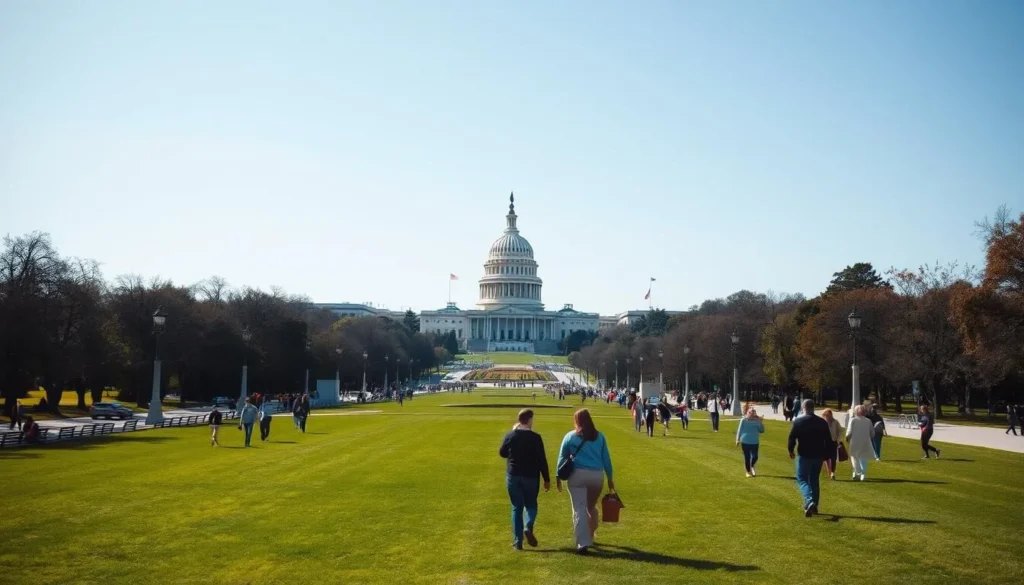
Neighborhood Walking Tours
Beyond the Mall, DC’s diverse neighborhoods offer excellent walking opportunities. Georgetown’s historic streets, Adams Morgan’s cultural diversity, and Capitol Hill’s charming rowhouses are all best experienced on foot.
Self-guided walking tours are available through various apps, or you can join organized walking tours that focus on history, architecture, food, or other themes.
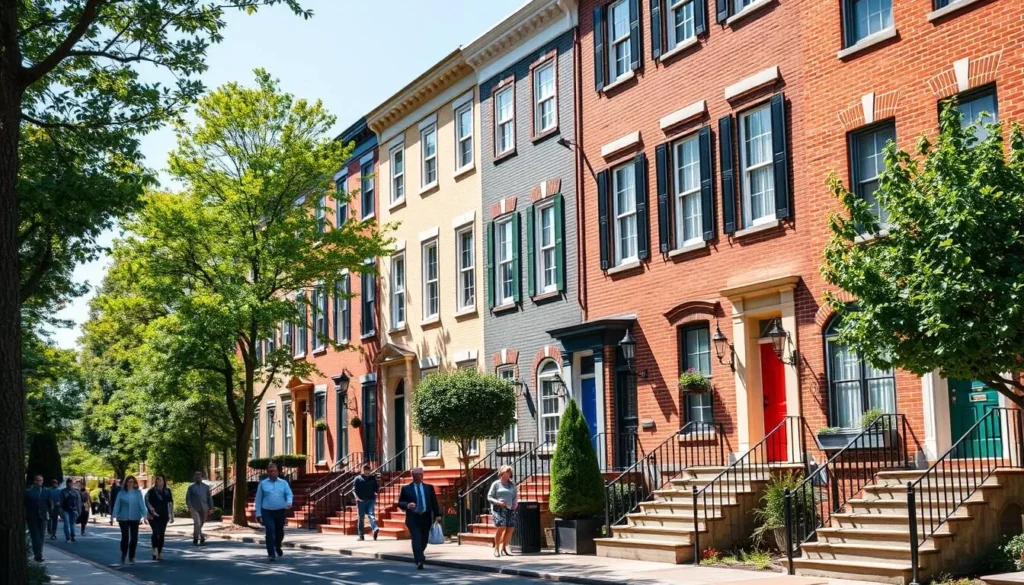
Discover the best guided tours and activities in Washington DC, including walking tours of historic neighborhoods and monuments.
Practical Tips for Using Washington DC Public Transportation
Metro Etiquette
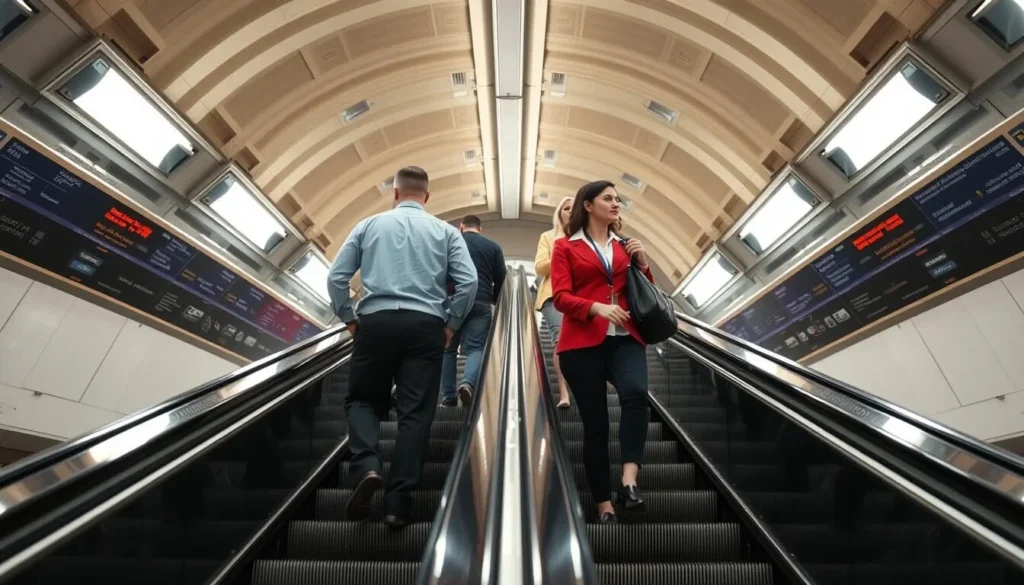
- Stand on the right, walk on the left on escalators
- Let passengers exit the train before boarding
- Move to the center of the car during crowded periods
- Keep conversations quiet and avoid phone calls
- Offer seats to elderly, pregnant, or disabled passengers
Money-Saving Tips

- Purchase a SmarTrip card and load a multi-day pass for unlimited rides
- Travel during off-peak hours (9:30 AM-3 PM and after 7 PM) for lower Metro fares
- Use the DC Circulator for $1 rides between popular destinations
- Consider Capital Bikeshare for short trips (first 30 minutes free with membership)
- Look for combo tickets that include transportation and attraction admission
Safety & Accessibility
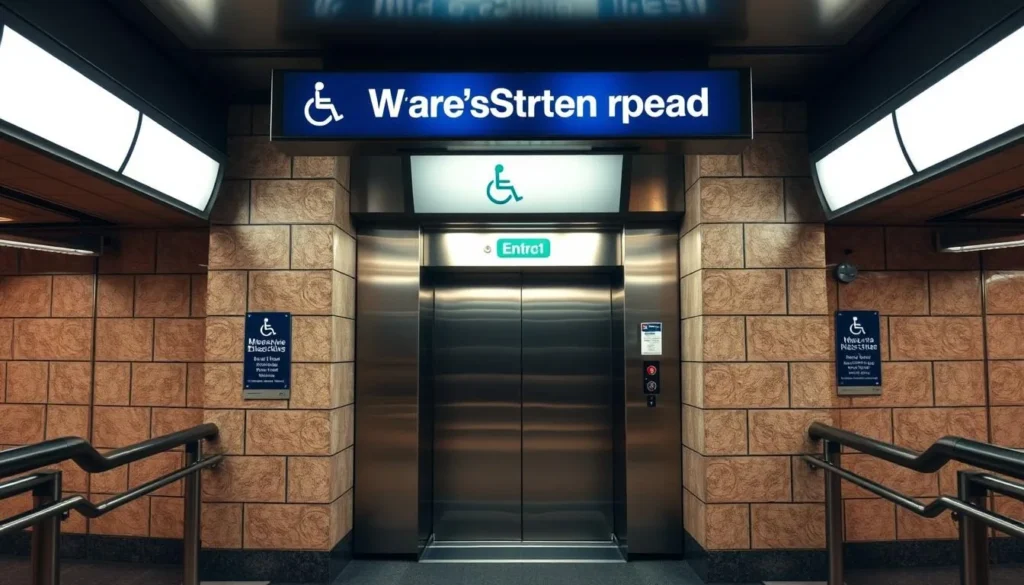
- All Metrorail stations and buses are wheelchair accessible
- Use the elevator call buttons for assistance at Metro stations
- Stay alert and aware of your surroundings, especially at night
- Keep valuables secure and be mindful of pickpockets in crowded areas
- Download the Metro Transit Police app to report issues directly
“Stand on the right, walk on the left” – The unwritten rule of DC Metro escalators that locals take very seriously!
Best Neighborhoods for Public Transportation Access
When planning your stay in Washington DC, consider these neighborhoods with excellent public transportation connections that make exploring the city a breeze.
Downtown/Penn Quarter
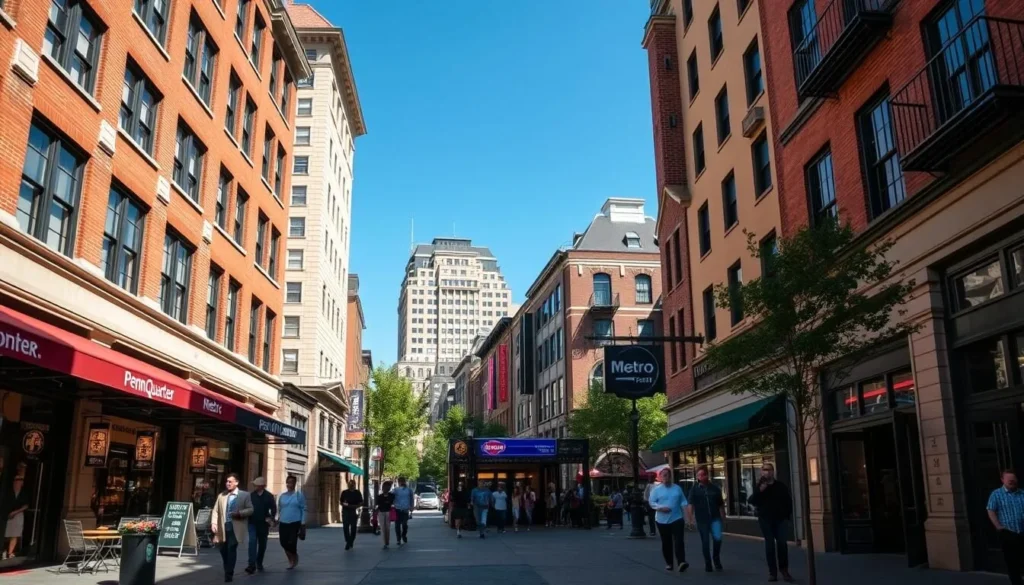
Located in the heart of DC, this area offers access to multiple Metro lines (Red, Yellow, Green, Blue, Orange, and Silver) and numerous bus routes. Stay here for easy access to the National Mall, Smithsonian museums, and major attractions.
Nearby stations: Metro Center, Gallery Place-Chinatown, Archives-Navy Memorial
Dupont Circle
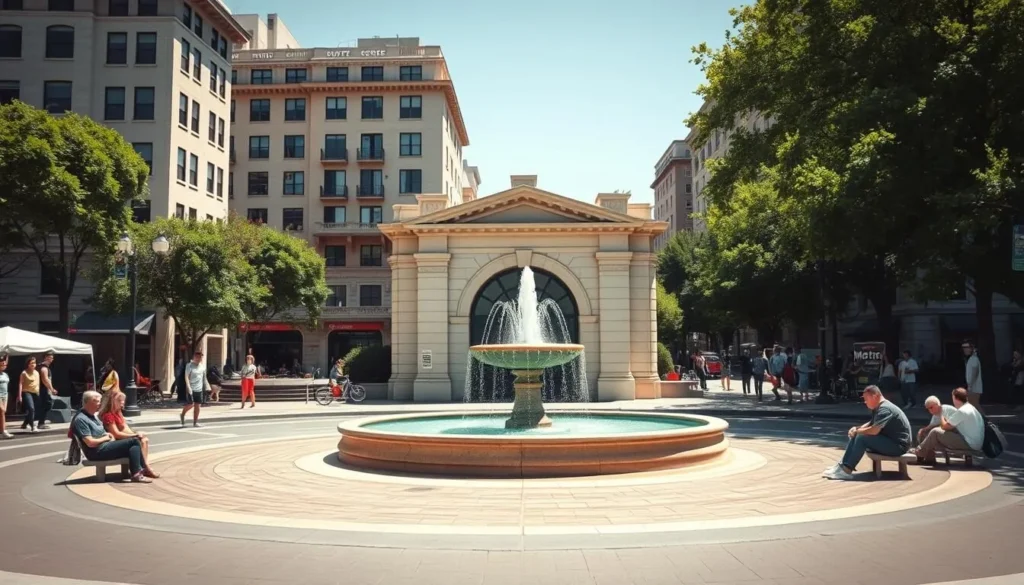
This vibrant neighborhood sits on the Red Line and is served by multiple bus routes. Its central location makes it easy to reach other parts of the city, while its charming streets, restaurants, and shops are perfect for exploring on foot.
Nearby station: Dupont Circle
Capitol Hill
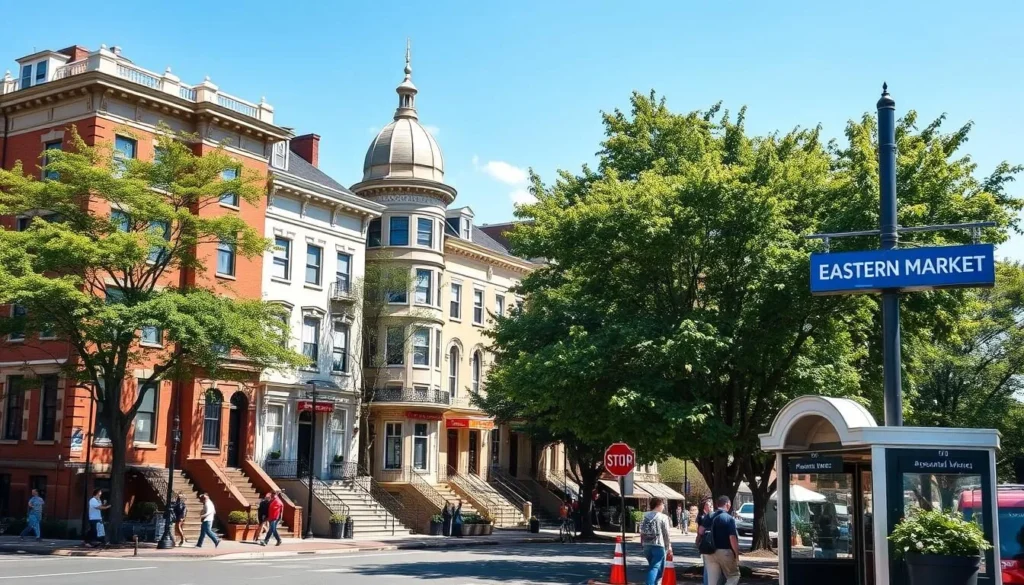
Home to the US Capitol and Library of Congress, this historic neighborhood is served by the Orange, Blue, and Silver lines. The area features beautiful rowhouses, Eastern Market, and easy access to the National Mall.
Nearby stations: Capitol South, Eastern Market, Union Station
Find the perfect place to stay in these transit-friendly neighborhoods for easy access to Washington DC public transportation and major attractions.
Essential Planning Tools
Make navigating Washington DC’s public transportation system easier with these helpful tools and resources.
Recommended Apps
- SmarTrip – Official WMATA app for managing your fare card and planning trips
- Transit – Real-time arrivals for Metro, bus, bikeshare, and rideshare options
- Citymapper – Comprehensive trip planning with multiple transportation options
- DC Metro and Bus – Offline Metro maps and real-time arrivals
- Capital Bikeshare – Find and unlock bikeshare stations throughout the city
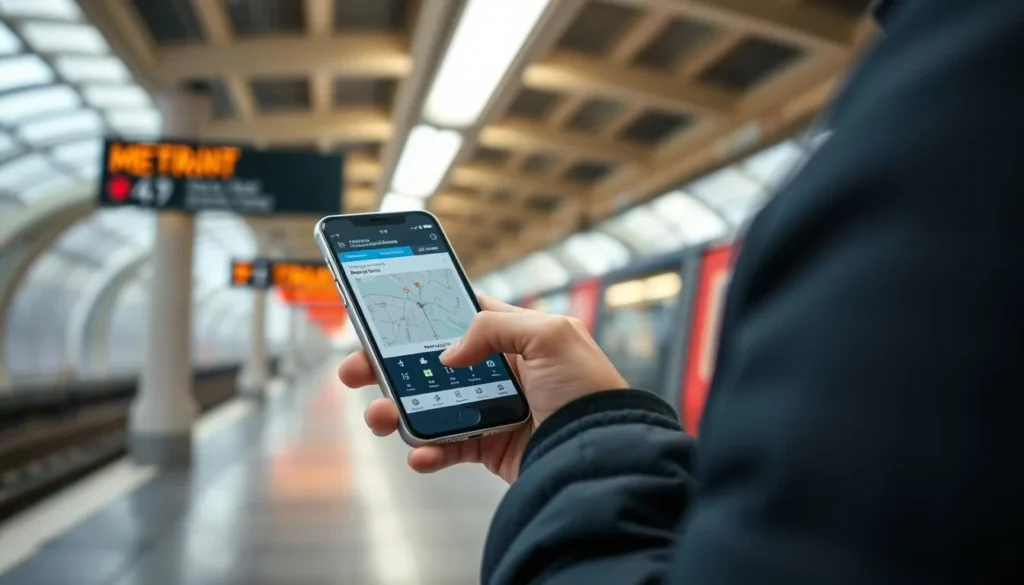
Official Resources
- WMATA Website – Official site for Metro schedules, maps, and service updates
- DC Circulator – Information on routes, schedules, and fares for the $1 bus service
- Capital Bikeshare – Details on bikeshare locations, pricing, and membership options
- DC Streetcar – Information on the free streetcar service along H Street NE
- MetroAlerts – Sign up for email or text notifications about service disruptions
Sample Itineraries Using Public Transportation
These sample day itineraries demonstrate how to efficiently use Washington DC public transportation to explore the city’s top attractions.
National Mall Highlights (1 Day)
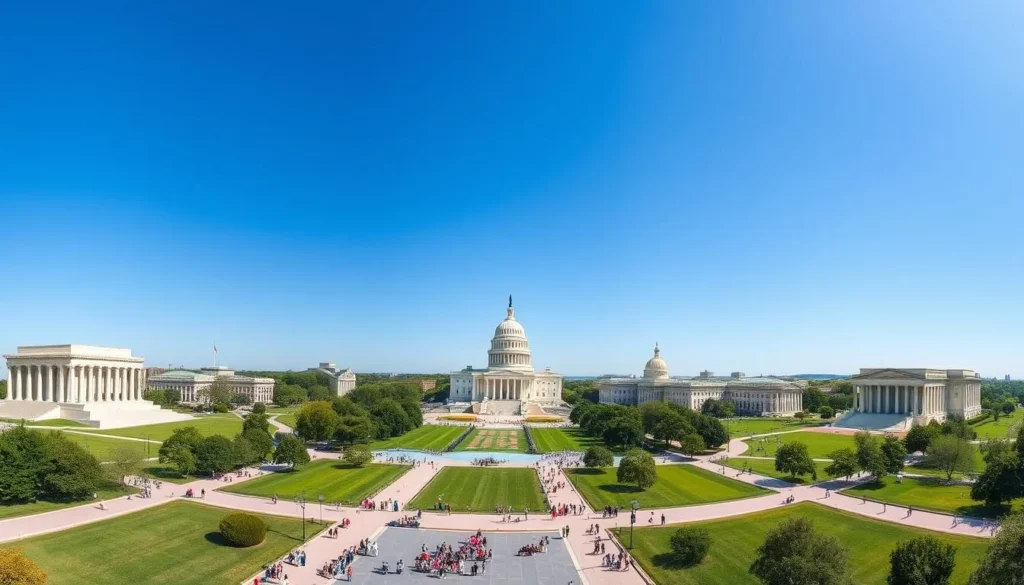
- Morning: Take the Metro Blue, Orange, or Silver line to Smithsonian station. Visit the National Air and Space Museum and National Museum of Natural History.
- Lunch: Walk to the National Gallery of Art Sculpture Garden or nearby food trucks.
- Afternoon: Walk west along the National Mall to visit the Washington Monument and Lincoln Memorial.
- Evening: Take the DC Circulator National Mall route to return to the Smithsonian Metro station, then head to dinner in Penn Quarter or Chinatown (Gallery Place-Chinatown station).
Beyond the Mall (1 Day)
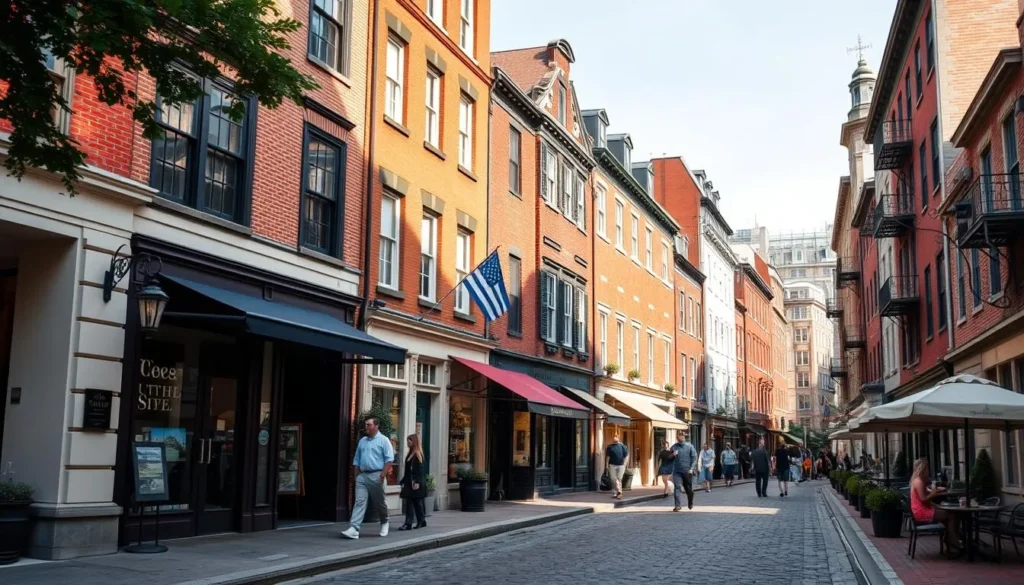
- Morning: Take the Metro Red Line to Dupont Circle. Explore the neighborhood and visit Phillips Collection art museum.
- Lunch: Enjoy lunch at one of Dupont Circle’s many restaurants.
- Afternoon: Take the DC Circulator Georgetown-Union Station route to Georgetown. Explore the historic neighborhood and waterfront.
- Evening: Take Capital Bikeshare from Georgetown to the Kennedy Center (dedicated bike path available). Enjoy a performance or free Millennium Stage concert at 6 PM.
Enhance your Washington DC experience with guided tours and special activities that complement your public transportation explorations.
Essential Tips for First-Time Visitors
When to Visit
The best times to visit Washington DC are spring (March-May) and fall (September-November) when the weather is mild and crowds are smaller. Cherry blossom season (late March to early April) is beautiful but extremely crowded, so expect busier public transportation.
Summer (June-August) brings hot, humid weather and larger crowds of tourists and student groups. Winter (December-February) offers fewer crowds but can bring cold temperatures and occasional snow that might affect transportation.
| Season | Transportation Considerations |
| Spring | Crowded during cherry blossom season; pleasant for walking and biking |
| Summer | Air-conditioned Metro provides relief from heat; good time for evening monuments tour |
| Fall | Ideal for walking tours; less crowded public transportation |
| Winter | Possible delays during snow; indoor Metro stations provide warmth |
Visitor Passes & Discounts
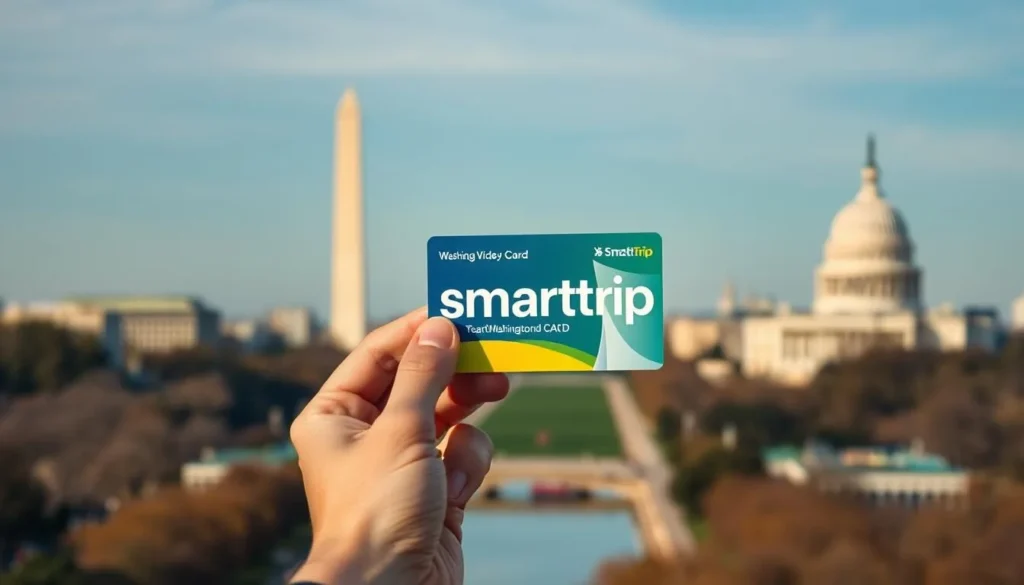
Several pass options can save you money on Washington DC public transportation:
- SmarTrip 1-Day Unlimited Pass ($13) – Unlimited Metrorail and Metrobus for one day
- SmarTrip 3-Day Unlimited Pass ($28) – Ideal for weekend visitors
- SmarTrip 7-Day Unlimited Pass ($58) – Best value for week-long stays
- DC One Pass – Combines attractions and unlimited transportation
Money-Saving Tip: If you’re visiting multiple attractions, consider a combination pass that includes transportation and admission fees. This can save you both money and the hassle of purchasing separate tickets.
Accessibility Information
Washington DC’s public transportation system is designed to be accessible to all visitors, including those with mobility, visual, or hearing impairments.
Metro Accessibility
- All Metrorail stations are equipped with elevators
- Gap reducers bridge the space between platforms and trains
- Bumpy tiles at platform edges alert visually impaired riders
- Audio announcements and visual displays in all stations and trains
- Priority seating available in all train cars
For elevator outages or service disruptions, check the WMATA Service Status page or call 202-962-1212 for assistance.
Bus Accessibility
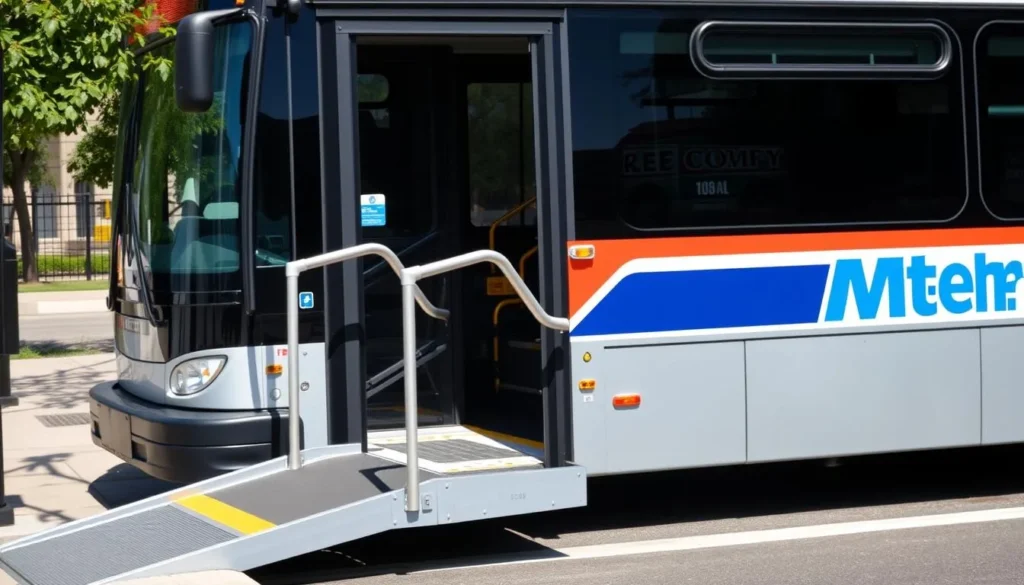
- All Metrobuses are equipped with wheelchair ramps and securement areas
- Buses can “kneel” to reduce the step height for boarding
- Audio and visual stop announcements on all buses
- Priority seating near the front of all buses
- Service animals are welcome on all transportation
For visitors with disabilities who need specialized transportation, MetroAccess provides shared-ride, door-to-door service. Advance registration is required.
Conclusion: Navigating DC with Confidence
Washington DC’s comprehensive public transportation system makes exploring the nation’s capital accessible, affordable, and convenient. From the extensive Metro network to eco-friendly buses, bike sharing options, and walkable neighborhoods, visitors have multiple ways to experience the city’s iconic landmarks, diverse neighborhoods, and cultural treasures.
By understanding the basics of Washington DC public transportation before your trip, you’ll save time, money, and stress while enjoying more of what this remarkable city has to offer. Whether you’re visiting world-class museums, historic monuments, or vibrant local neighborhoods, DC’s transit system will help you make the most of your visit to America’s capital city.
Ready to experience Washington DC? Start planning your trip today with these essential travel services:
